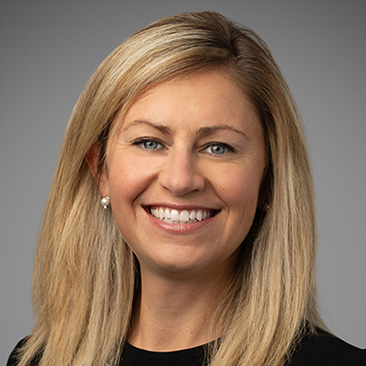Posted on:
Featured, Insights, Latest Thinking, Securities Litigation, Enforcement & Investigations, What's NewIn remarks delivered June 7, 2021 to the Wall Street Journal’s CFO Network Summit, SEC Chair Gary Gensler (available here) (“Gensler June 7 Remarks”) highlighted areas of concern raised by the use of Rule 10b5-1 trading plans by insiders and companies alike, and signaled the possibility that regulatory solutions to these concerns loom on the near horizon. Chair Gensler made the same points in a public statement delivered a few days later at a meeting of the SEC’s Investor Advisory Committee (“IAC”) (available here) (“Gensler June 10 IAC Public Statement”). An eventful week culminated in the SEC’s release, on the afternoon of Friday June 11, of an updated rulemaking agenda (available here) suggesting that the Chair’s ideas could be tested in the crucible of the public notice-and-comment process as soon as October of this year.
We summarize and assess the implications of the Chair’s recent statements below, following a brief background discussion of Rule 10b5-1, adopted more than 20 years ago under the Securities Exchange Act of 1934, as amended (“Exchange Act”).
A Brief History of Exchange Act Rule 10b5-1
With the SEC’s adoption of Rule 10b5-1 in 2000, the agency created a new affirmative defense enabling officers, directors and their companies to show that specific purchases and/or sales of stock or other equity securities in the public trading market were not made “on the basis of” material, non-public information (MNPI). The rule contains several requirements intended to prevent unlawful insider trading, perhaps the most significant of which provides that the defense is not available if an issuer or insider cannot demonstrate that a particular plan “was entered into in good faith and not as part of a plan or scheme to evade the prohibitions of this Rule 10b5-1.” Over the intervening years, however, Congressional and investor critics have charged that inherent weaknesses in Rule 10b5-1 has facilitated questionable trading practices to the detriment of investor confidence in the integrity and fairness of the U.S. securities market.1
SEC Chair Gensler’s Observations on Rule 10b5-1 Plans
Chair Gensler’s remarks last week indicate that he is receptive to Congressional and investor criticisms, which apparently prompted him to direct the SEC Staff to make recommendations on how the agency “might freshen up Rule 10b5-1.” As noted above, this rulemaking project seems to be on a fast track.
In his remarks, the Chair focused on the need to address the following areas of perceived deficiency in Rule 10b5-1:
- No Minimum Cooling-Off Period Between Plan Adoption and First Trade: Citing academic research published in January 2021, one of whose co-authors participated in a panel discussion of 10b5-1 plans at the June 10 IAC meeting,2 Chair Gensler observed that “some bad actors” may view the lack of a mandatory minimum cooling-off period between adoption of such plans and the first trade thereunder as an opportunity for MNPI misuse. The Chair also noted bipartisan expressions of support from such diverse sources as his predecessor Chair Jay Clayton,3 and current Commissioners Allison Herren Lee and Caroline Crenshaw,4 for proposals that could impose as much as a four- to six-month delay between plan adoption and the first trade. An approach imposing a relatively lengthy minimum cooling-off period therefore “deserves further consideration” by the SEC, even though it exceeds the range of what would be accepted today as a “best practice.”
- No Limits on Cancellation: While there are no current limitations on how and when 10b5-1 plans may be canceled, which is not surprising given the absence of the necessary element of a “purchase” or “sale” of securities,5 the Chair observed that a decision by a company or an insider to cancel a market transaction under such a plan may be as economically significant as its execution. To illustrate, he pointed to the example of a top executive’s cancellation of a sell order to avoid a loss prior to the company’s announcement of negative MNPI. Accordingly, Mr. Gensler asked the Staff “to consider limitations on when and how plans can be canceled.”
- No Mandatory Disclosure Requirement: There are no line-items requiring companies, officers or directors to disclose the adoption, modification and/or terms of their Rule 10b5-1 plans, though some choose to disclose this information voluntarily. Chair Gensler believes that mandating such disclosures “could enhance confidence in our markets.”
- No Limits on Number of Plans That Can Be Adopted: Because Rule 10b5-1 does not specifically limit adoption of multiple plans by companies or their insiders, some may be tempted to pick from among a menu of plans to facilitate a particularly advantageous trade. For this reason, the Chair has asked the Staff to consider whether to require such limits.
- Intersection of Rule 10b5-1 Plans with Share Buybacks: Chair Gensler did not explain his final request to the Staff “to consider other potential reforms to the rule, including the intersection with share buybacks.” So we will have to wait and see whether he has a specific regulatory change in mind.6
What Should Companies Do Now? Companies should take a careful look at the design and administration of their existing controls, policies and procedures established to ensure insider trading compliance, including but not limited to those governing the adoption, modification and termination of Rule 10b5-1 plans. Repeated SEC warnings in recent years underscore the SEC enforcement risk in this area, as the Chair emphasized last week: “As the rule stands today, cancelling or amending any 10b5-1 plans calls into question whether they were entered into in good faith. If insiders don’t act in good faith when using 10b5-1 plans, those plans will not offer them an affirmative defense.” He went on to say, in his June 7 speech, that “SEC staff will use all of the tools in our toolbox to ensure we are identifying and punishing abuses of 10b5-1 plans.”
At the same time, as the Chair acknowledged, many companies have instituted a variety of common-sense measures now regarded as “best practices” to deter and prevent insider misuse of MNPI. Whether or not such measures will forestall the SEC’s amendment of Rule 10b5-1 is difficult to predict at this early stage, given the Chair’s belief that application of best practices is not consistent, and ultimately may depend on what data the agency is able to gather through the public comment process and other methods at its disposal. In the meantime, we will continue to monitor SEC developments on both the rulemaking and enforcement fronts and keep you posted.
- See, e.g., Letter from Senators Elizabeth Warren, Sherrod Brown and Chris Van Hollen to Acting SEC Chair Allison Herren Lee dated February 10, 2021 (available here); H.R. 1528, Promoting Transparent Standards for Corporate Insiders Act, 117th Congress, 1st Session (2021-2022)(available here)(passed by the House of Representatives on April 20, 2021, now pending in the Senate Committee on Banking, Housing and Urban Affairs chaired by Senator Brown); Letter to SEC Chair Elisse B. Walter from Jeff Mahoney, General Counsel, Council of Institutional Investors, dated December 28, 2012 (available here).≈
- See David F. Larcker, Bradford Lynch, Phillip Quinn, Brian Tayan, and Daniel E. Taylor, “Gaming the System: Three ‘Red Flags’ of Potential 10b5-1 Abuse” (Jan. 19, 2021), available here. Wharton Professor Taylor participated in a panel discussion of 10b5-1 plans, moderated by Cambria Allen-Ratzlaff, Corporate Governance Director, UAW Retiree Medical Benefits Trust, joined by Keir Gumbs, Uber Technologies Vice-President and Deputy General Counsel, and Jeff Mahoney, Council of Institutional Investors General Counsel (whose written remarks to the IAC are available here), and also co-authored an opinion piece on the topic with SEC Commissioner Caroline Crenshaw, available here (“Crenshaw & Taylor”).≈
- See Letter from SEC Chair Jay Clayton to the Honorable Brad Sherman, U.S. House of Representatives, dated September 14, 2020, available here; see also Remarks of SEC Chair Jay Clayton to the Economic Club of New York, Putting Principles into Practice, the SEC from 2017-2020 (November 19, 2020) (“Clayton Remarks”), available here.≈
- See Letter from Acting SEC Chair Allison Herren Lee to Senator Elizabeth Warren), available here; Crenshaw & Taylor, note ii, above.≈
- See SEC Division of Corporation Finance Exchange Act Rules Compliance and Disclosure Interpretation No. 120.17, available here.≈
- Such suggestions have been made before, in speeches by former SEC Chair Clayton in 2020 (Clayton Remarks, note iii, above) and former SEC Commissioner Robert J. Jackson, Jr. in 2018, in a speech to the Center for American Progress, available here.≈


















